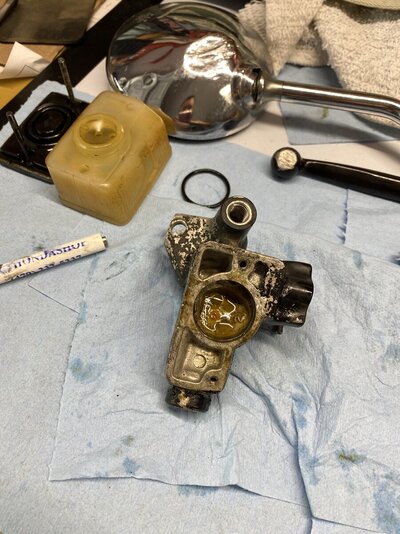Sorry for the long post….
I’m hitting a road block and need a little guidance from the collective wisdom.
81 CX500C
I installed a new SS front brake line due to the old line having no fluid passage thru it.
With the MC full of fluid, I see a minute amount of fluid movement and feel some pressure on my finger at the MC port. (Where the banjo threads into) Using a syringe I added fluid to the brake line until I got fluid flow from the caliper bleeder. At that point I connected the line at the MC and squeezed the brake lever. Very light lever and very minimal fluid movement. I either have a MC problem, or just a ridiculous amount of trapped air. I’m frustrated and not sure what to check. I have the brake lever zip-ty the lever closed and trying to let it gravity bleed.
I’m hitting a road block and need a little guidance from the collective wisdom.
81 CX500C
I installed a new SS front brake line due to the old line having no fluid passage thru it.
With the MC full of fluid, I see a minute amount of fluid movement and feel some pressure on my finger at the MC port. (Where the banjo threads into) Using a syringe I added fluid to the brake line until I got fluid flow from the caliper bleeder. At that point I connected the line at the MC and squeezed the brake lever. Very light lever and very minimal fluid movement. I either have a MC problem, or just a ridiculous amount of trapped air. I’m frustrated and not sure what to check. I have the brake lever zip-ty the lever closed and trying to let it gravity bleed.



 Feel free to hang out and lurk as long as you like. However, we would like to encourage you to
Feel free to hang out and lurk as long as you like. However, we would like to encourage you to 

